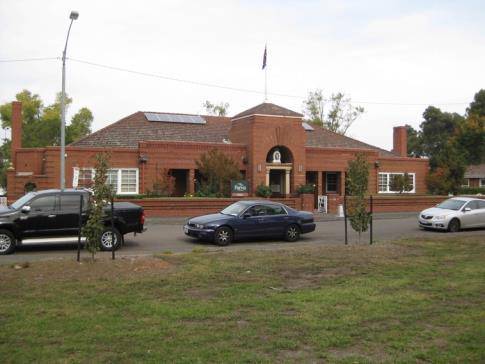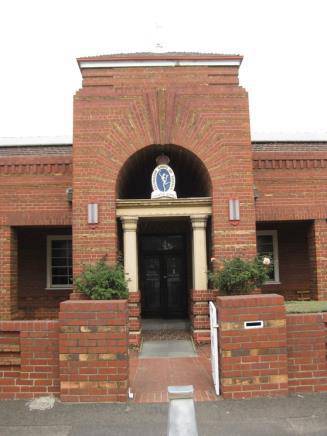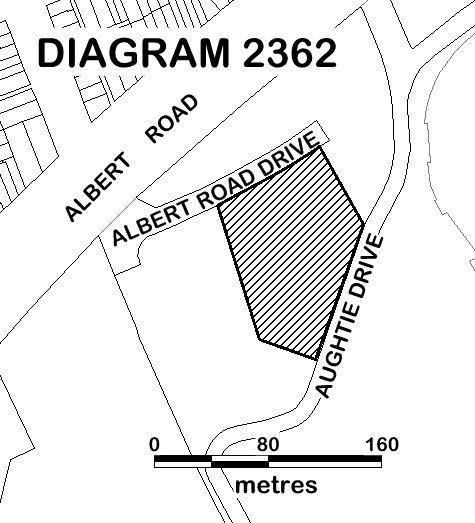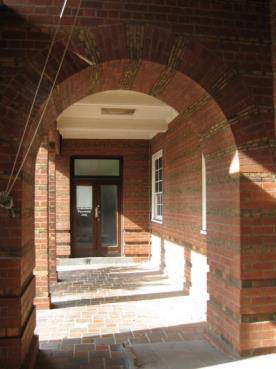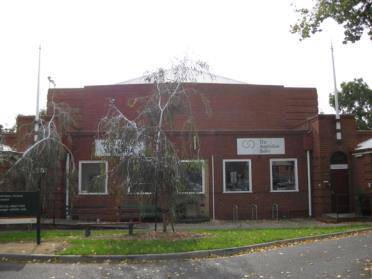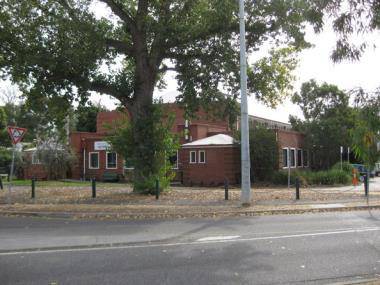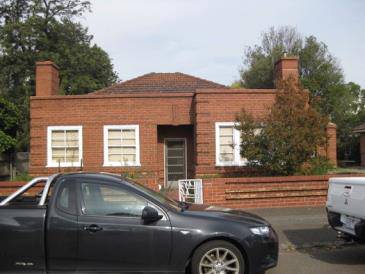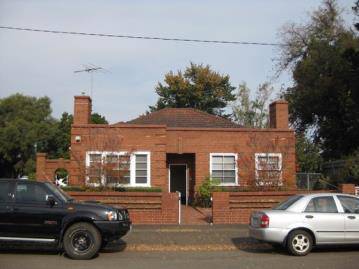| Back to search results » | Back to search page » |
|
FORMER ROYAL AUSTRALIAN CORPS OF SIGNALS DRILL HALL
Statement of Significance
What is significant?
The Former Royal Australian Corps of Signals Drill Hall, including the Administration Building fronting Albert Road Drive South, the Drill Hall, two residences either side of the Administration Building, the workshop and garage building along the west of the site, and original gates, fencing and landscaping. The site of the Drill Hall was used for military purposes from around 1885, and originally contained two Orderly Rooms, which were damaged by fire in 1933 and demolished. From 1935 to 1939 there was a dramatic increase in defence spending in response to the perceived threat of another war. As the Defence Act did not allow for the existence of a regular army, all the major expenditure on accommodation in Victoria was on the construction of a series of new, imposing, red brick drill halls to train the citizen army. The existing Drill Hall complex was constructed between 1935 and 1936 and opened in 1936, for the Australian Corps of Signals. The complex was designed by Commonwealth Architect George H. Hallandal, overseen by Chief Architect Horace J. Mackennal and constructed by J. C. Corbett. The Drill Hall complex was occupied by various units of the Royal Australian Corps of Signals until 1975. After this date, the buildings continued to be occupied by various units of the Army until the mid-1990s. The Drill Hall complex has been extended twice with the addition in 1960 of classrooms (since removed) to the garage buildings and minor internal alterations in 1992-93 to the Drill Hall for the Australian Army Band. A plaque on the Administration Building was presented in August 1995 by the Royal Australian Signals Association (Victoria). It states that Australian Corps of Signals emblems of the interwar era remain in the building, to honour the many Signal units of the Militia, 2nd AIF (Australian Imperial Force), ARA (Australian Regular Army), CMF (Citizens Military Forces) and Army Reserve which used the site continuously until 1975. 'The badges [emblems] also commemorate the thousands of signal men and woman who served here, some of whom did not return from active service.' The complex comprises the only remaining military buildings dating from the Army occupation of Albert Park during World War II. The Former Royal Australian Corps of Signals Drill Hall is made up of five discrete buildings - the Administration Building and two flanking residences fronting Albert Road Drive South, the Drill Hall to the rear (south) of the Administration Building, and the workshop/garages along the western boundary. The Administration Building and residences have been constructed in polychromatic brick in the Stripped Classical style. The Drill Hall has also been constructed in the Stripped Classical style but utilises plain red brick. The workshop/garages is a long, unadorned utilitarian structure. The frontage to Albert Road Drive South is highly symmetrical with the Administration Building and two residences linked by formal gardens, low walls and decorative steel fences. With the exception of the workshop/garages, all buildings feature Art Deco detailing in their highly intact interior spaces. The Administration Building and Drill Hall also retain built-in furniture and several Royal Australian Signals Corps emblems (depicting the winged Roman messenger god, Mercury) in relief. A mature memorial tree (Populus x canadensis 'Aurea') is located to the rear (south) of the Drill Hall. This site is part of the traditional land of the Kulin Nation.
How is it significant?
The Former Royal Australian Corps of Signals Drill Hall is of historical and architectural significance to the State of Victoria. It satisfies the following criteria for inclusion in the Victorian Heritage Register: Criterion A Importance to the course, or pattern, of Victoria's cultural history. Criterion D Importance in demonstrating the principal characteristics of a class of cultural places and objects. The Former Royal Australian Corps of Signals Drill Hall is significant at the State level for the following reasons: The Former Royal Australian Corps of Signals Drill Hall is historically significant as evidence of the increase in military preparedness and expenditure in Victoria in the years preceding World War II. The Drill Hall complex was built in 1935-36 to train a citizen army as part of a plan to improve Australian defences during the period of an increased threat of war. The Drill Hall complex was one of the first such complexes constructed in Victoria during the interwar period. It is significant for having continuously served as a Drill Hall complex for various Army units for approximately 60 years. [Criterion A] The Former Royal Australian Corps of Signals Drill Hall is architecturally significant as a fine and highly intact example of an interwar Drill Hall complex. Designed in the Stripped Classical style with Art Deco influences, the buildings and features that make up the Drill Hall complex are highly intact with interiors and exteriors generally retaining all of their original features, decorative elements and finishes. The association with the Signals Corps is illustrated in the original Signals Corp emblems and memorabilia retained on the exterior and interior of the building. The setting retains a high level of integrity, comprising the original garden form, and fence with pedestrian and vehicular gates to the front boundary. [Criterion D] The Former Royal Australian Corps of Signals Drill Hall is also significant for the following reasons, but not at the State level: The Former Royal Australian Corps of Signals Drill Hall is significant for its association with Commonwealth Architect George H. Hallandal, who designed the complex in the Stripped Classical style. Under employment of the Commonwealth Department of Works, Hallandal designed the majority of the new red brick drill halls in Victoria between 1935 and 1939. The Former Royal Australian Corps of Signals Drill Hall is significant for comprising the only remaining military buildings dating from the Army occupation of Albert Park during World War II.
Group
Military
Category
Barracks & housing


